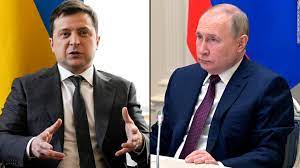International Trade
The one thing markets aren’t worried about isn’t tied to Russia-Ukraine

The post-pandemic era arrived while you were worried about Russia.
To paraphrase Jay-Z (I’m a Brooklynite, sue me): The market has 99 problems, but COVID-19 doesn’t seem to be one.
Well, at least not anymore, given investors’ ever-lengthening list of concerns. Spiraling inflation that hasn’t been seen in decades is being amplified by spiking oil and gas prices, which is feeding extreme volatility and risk aversion on Wall Street. Add to all of that the sinking feeling that World War III could be just around the corner, and the pandemic has been all but knocked off the front pages.
Oh, and did I mention that North Korea is testing new long-range missiles?
The market’s current COVID nonchalance may seem odd in light of the fact that the pandemic has dominated sentiment for the last two years, and public health officials warn the virus isn’t done with us yet. However, it’s actually reflective of several factors.
Omicron is in retreat (though officials are nervously eyeing a sub-variant driving a slim percentage of new cases), the virus is morphing into an endemic phase that’s leading to mandates being scuppered almost everywhere. Perhaps more important of all, people are just plain over the virus, and all the caution and restrictions it entails.
All available data — including the sinking stocks of vaccine leaders Moderna (MRNA) and Pfizer (PFE), both lodged near 52-week lows as shots plateau — paint a clear picture of a public that’s fully ready to do what the immortal Diana Ross once sang. They’re coming out, and want the world to know — irrespective of any stagflation fears.
“What happened to COVID?” asked Meg Horneman, CIO at Verdence Capital Advisors, in a recent client note. “The Russia/Ukraine tragedy has replaced the daily news surrounding COVID and the bitter divide over vaccines and masking.”
“Americans should be delighted to know that COVID cases have collapsed to the lowest level since July 2021. The percentage of Americans that have received at least one COVID vaccine shot has exceeded 70%. Every state (territories not included) within the U.S. except Hawaii is rescinding their school mask mandate by the end of March,” Horneman wrote.
Regardless, some are still nervous about the direction of a virus that’s managed to surprise and elude all measures to contain it. Yahoo Finance’s Anjalee Khemlani reported on Thursday that a team of public health experts, including former advisers to President Joe Biden, have created a new roadmap with recommendations for the government and private sector to prepare for the current (and next) pandemic.
But as we step ever-more confidently into the post-pandemic era we were promised last year when the mass vaccination effort began, it suggests the white-hot demand that’s driving inflation is unlikely to abate. A high class problem to be sure, but still very much an issue for the Federal Reserve, which is set to meet next week.
The Fed’s decision is widely expected to be the start of the pandemic era’s first rate hike cycle, even as fallout from the Russia-Ukraine conflict raises fears for the economy, putting the central bank “between a rock and a hard place,” as Axios wrote on Thursday. With all that’s happening, the Fed could afford to get a little less hawkish, but probably won’t.
Meanwhile, all of the same fundamentals driving the Fed’s newly-embraced hawkishness are still very much on the front burner — even more so now that spiking energy costs are leading to consumers being “blown away” by prices at the pump, as one driver told Yahoo Finance’s Dani Romero recently.
Oh for the good ol’ days when all we had to think about was a certain virus that shall remain nameless.

